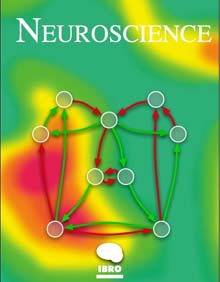Unraveling the mysteries of the human brain, and the mind it gives rise to, is within the reach of modern science, but reaching this elusive destination will require a comprehensive and carefully charted roadmap, suggests a forthcoming special issue of the journal Neuroscience.
The issue, scheduled for publication in late April, provides an intriguing look at how researchers from a range of cognitive neuroscience disciplines are slowly but steadily piecing together the complex puzzle of how the human brain operates, revealing how incredibly sophisticated working memory processes — from the firing of a single neuron to the activation of multiple brain regions — help shape our understanding of and our interactions with the world around us.

First, the capacities and properties that the model is to explain need to be described in detail and a functional architecture by virtue of which the mind/brain enables the person to have those properties and capacities needs to be put forward. This is the role of cognitive psychology.
Second, working computational models of cognitive functions that specify in detail the proposed theoretical assumptions and are based on known neurobiology of the brain need to be built. That is the domain of computational science.
Third, the actual anatomical structure and physiology of the brain need to be taken into account to be able to explain how the cognitive functions are actually instantiated in the brain. That is the purview of neuroscience.
Fourth, cognitive dysfunctions following specific brain damage caused either by brain injury, neurological or psychiatrical disease, need to be studied to provide further constraints and tests of the theory. That is the realm of cognitive neuropsychology and neuropsychiatry.
“Each of the stated lines of inquiry contributes unique and necessary information,” Repovs and Bresjanac suggest. “This is the framework we adopted as the backbone of the issue.”
To illustrate the benefits of an interdisciplinary framework, the special issue of Neuroscience showcases of some of the latest and most promising research into various aspects of working memory function, showing how researchers from diverse sub-disciplines are attempting in their own way to answer key common questions:
• What are the properties, capabilities and limitations of working memory?
• What can we learn of working memory from its dysfunctions?
• What are the cortical areas and the neural activity related to working memory?
• What are the molecular/cellular bases of working memory?
• What can computer models and simulations reveal about the working memory?
“Today,” the co-editors conclude, “we are able to describe the functional properties of the working memory and its subsystems, we are identifying the brain regions involved in the storage and manipulation of information in working memory, and are starting to understand the functional networks that they form, we are gaining understanding of the neuronal representational codes and the roles of respective neurotransmitters, we are building computer simulations that could enable us to understand and predict the complex mechanisms involved.
“More than ever, interdisciplinary collaboration could provide us with new major insights into this important cognitive ability.”